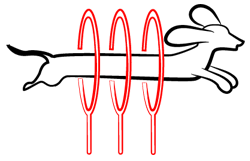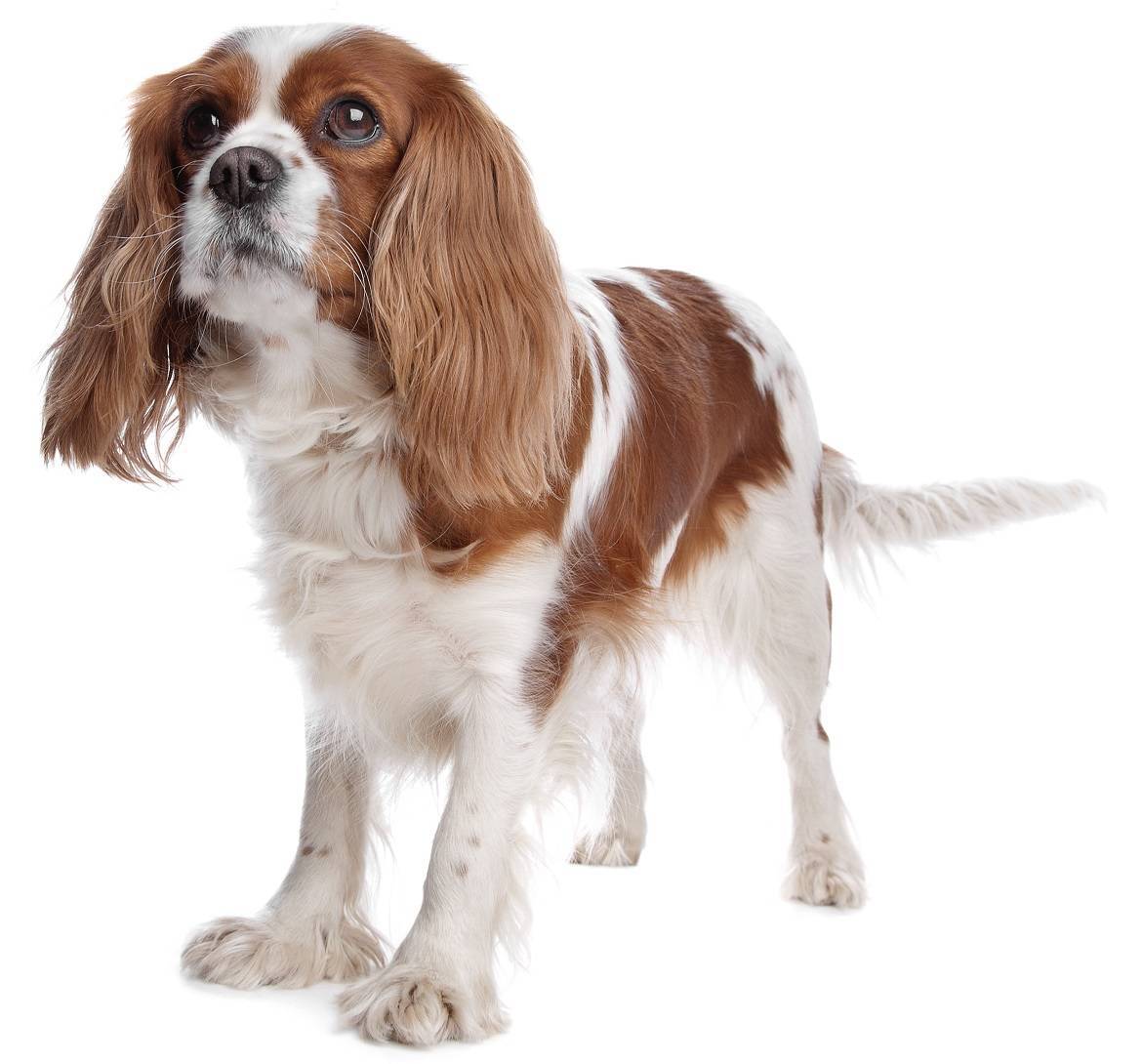
Paws ‘N’ Pups Quickview
Size
| Energy Level
| Trainability
| Paws ‘N’ Pups Rank
|
Characteristics
| Physical Characteristics: Height: 12-13” Weight: 13-18 lbs. Energy Level: Low-Moderate | Colors: The American Kennel Club recognizes the Cavalier King Charles in the following colors:
Tan markings are common. |
| Health & Longevity: 9-14 years Breeders screen for the following conditions:
Syringomyelia (SM) is sometimes seen; this is a malformation of the skull, which can cause mild discomfort to severe pain and partial paralysis. Episodic Falling Syndrome, unique to the breed, can also occur. An affected dog usually shows symptoms during exercise or when excited or stressed; they suddenly develop a rigid gait in the rear limbs and move in an exaggerated, stiff manner. It was once thought to be a muscular condition but recent research has shown it to be linked to brain function. This is a non-progressive disorder that tends to improve with therapy and does not affect the dog’s lifespan. | |
Temperament & Train-ability
The Cavalier King Charles Spaniel is a gentle soul; a companion dog with some spaniel attributes. Sweet and playful, Cavaliers love everyone they meet, and usually get along well with other animals. One of the largest toy breeds, many retain a very spaniel outlook and enjoy outdoor activities such as hiking or long walks on the beach. Indeed, these outdoorsy individuals can be inclined to chase wildlife, which can put him in harm’s way; best to keep your Cavalier leashed. Other individuals may be more inclined to seek out the comfort of the nearest lap or pillow. One thing is consistent; this is a very people-oriented breed and will be stressed if left alone too long. Lonely Cavaliers may whine, bark, or chew inappropriately. So attached to their people are they, you are likely to have a constant companion padding along behind you, even to the bathroom. Cavaliers will do best with someone home during the day, but can be conditioned to spending short periods alone. They will never thrive relegated to the yard or ignored.
Cavaliers are well suited to introducing novice dog owners to the joys of canine companionship; they also do well in apartments, condos, and in smaller yards. Having moderate exercise needs, two long walks a day and a yard to romp in is usually sufficient. Many enjoy the company of children and can make good family dogs. Lower energy children will enjoy tossing a ball or teaching your Cavalier tricks; bookworms will likely have a lap warmer. Although sturdy enough for older children, Cavaliers are not suited for toddlers. They also don’t make good watchdogs; these little tail-waggers will be happy to welcome all who arrive at his doorstep. Being sensitive to high temperatures, your Cavalier should be protected from overheating by housing in an air-conditioned house during hot weather.
Training your Cavalier will be easy; they are intelligent, willing dogs that will greatly enjoy the relationship-building activity of positive reinforcement methods. Because this breed tends to have soft, sensitive temperaments, using harsh, punitive methods will frighten, confuse, and shatter their trust in you.
Housetraining can be difficult, so some owners use a doggie door leading to an enclosed and covered area, and many owners opt for an indoor potty option for their dogs, such as pee pads or another type of potty tray. This ensures an acceptable location for the dog to relieve itself is always close by, reducing the likelihood of accidents in unwanted places. Cavaliers need lots of positive socialization to assure they grow to be confident about the world rather than fearful. Because separation anxiety is in the breed, it can be well worth the time to teach your dog that being alone is not the end of the world. It is recommended that Cavaliers be introduced to grooming very early and very positively. While some more active Cavaliers compete in various dog sports or enjoy hiking, the more laid back individuals may enjoy therapy work, or simply being the apple of their owner’s eye.
Grooming
Cavaliers carry a typical spaniel double coat; a longer outer coat tops a soft dense undercoat. The outer coat is sometimes straight, and sometimes wavy. The ears, tail, belly and backs of the legs have longer silky furnishings, which need regular (several times a week) brushing to keep mat-free; ears, in particular, are prone to matting and should be brushed daily. The Cavalier sheds a lot, all year, but during spring and fall, its coat will “blow”, and brushing during these times will need to be daily. Occasional baths will keep your Cavalier fresh; washing only feet and legs is often done to maintain a white coat without bathing the entire dog.
Toenails should be trimmed; most Cavaliers will not wear down their nails, even if walked on concrete. Teeth must also be checked and cleaned regularly. Ears will need regular cleaning with a pH-balanced ear cleaner; tearstains may occur in some lines.
Diet
The amount of food your Cavalier will need can vary depending on age, activity level, and type of food fed; on average, they will eat about 1/2 – 1 cup of food per day, which should be fed in two meals. Free feeding should be avoided, as many Cavaliers are prone to becoming overweight, which puts the dog at risk of many health problems. A portion of your Cavalier’s daily food can be used when training to avoid overfeeding. A constant supply of fresh, clean water must always be available.
Many Cavalier owners choose tall bowls with narrow openings; this allows the dog to eat or drink but keeps their ears out of food and water. Another option some utilize is a snood, a stretchy fabric tube that is slipped over the dog’s head to keep the ears covered while they eat.
Looking for a Cavalier King Charles Spaniel?
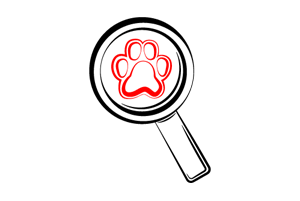 Find A Cavalier King Charles Breeder | 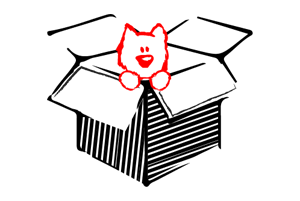 Cavalier King Charles Puppies For Sale | 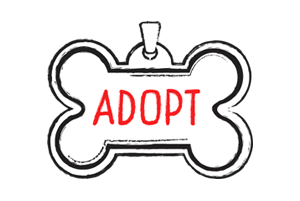 Adopt A Cavalier King Charles |
Cost
As with most popular breeds, prices for a Cavalier have a very wide range, from the $600-$900 range to $1,000-$5000. Breed rescue organizations are another option, where lovely dogs needing a home can be found; adoption fees vary widely, but are generally in the $200-$500 range.
Paws ‘N’ Pups Ranking
Paws ‘N’ Pups ranks every breed out of 4 with 1 being easiest to integrate into your life and 4 being the toughest – The lower the ranking the better.
Ranking takes into account a few basic factors such as cost, skill level needed, high vs. low maintenance, and how critical regular training is to success.
The Cavalier rates a 2; they generally require little skill, and nice dogs can be found for reasonable costs that make easy pets. However, they are also plagued with health problems.
Breeds Similar To Cavalier King Charles Spaniel
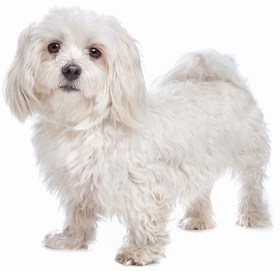 Maltese | 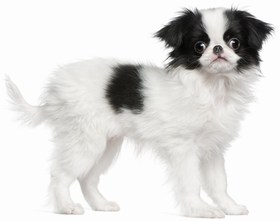 Japanese Chin | 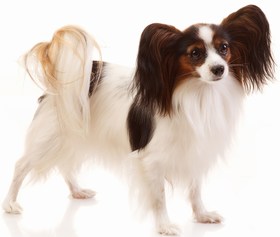 Papillon | 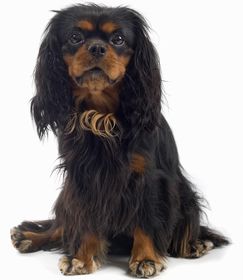 English Toy Spaniel |



